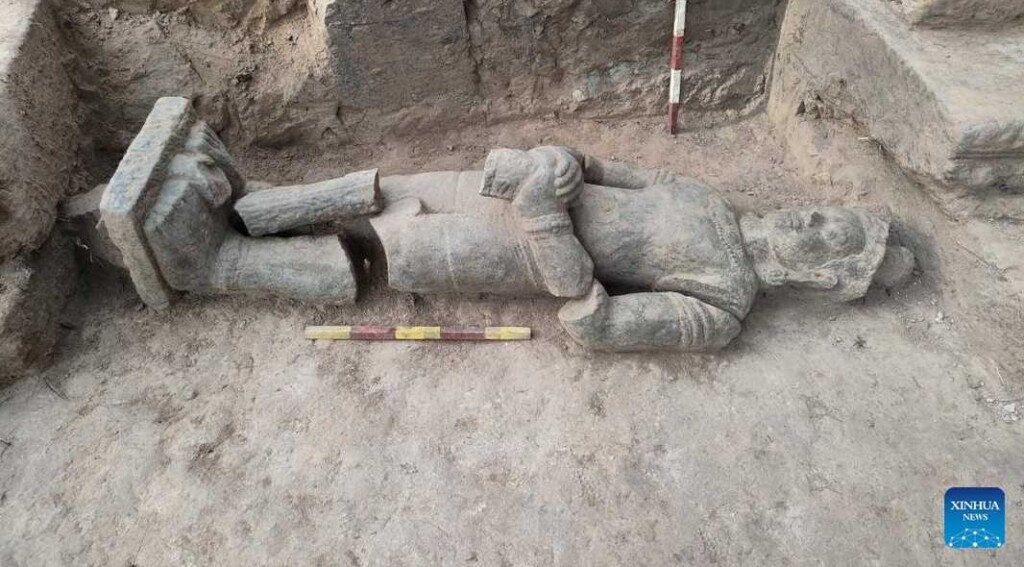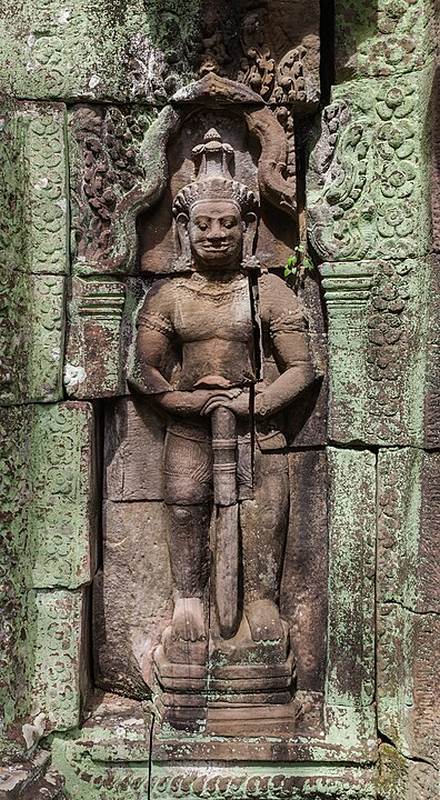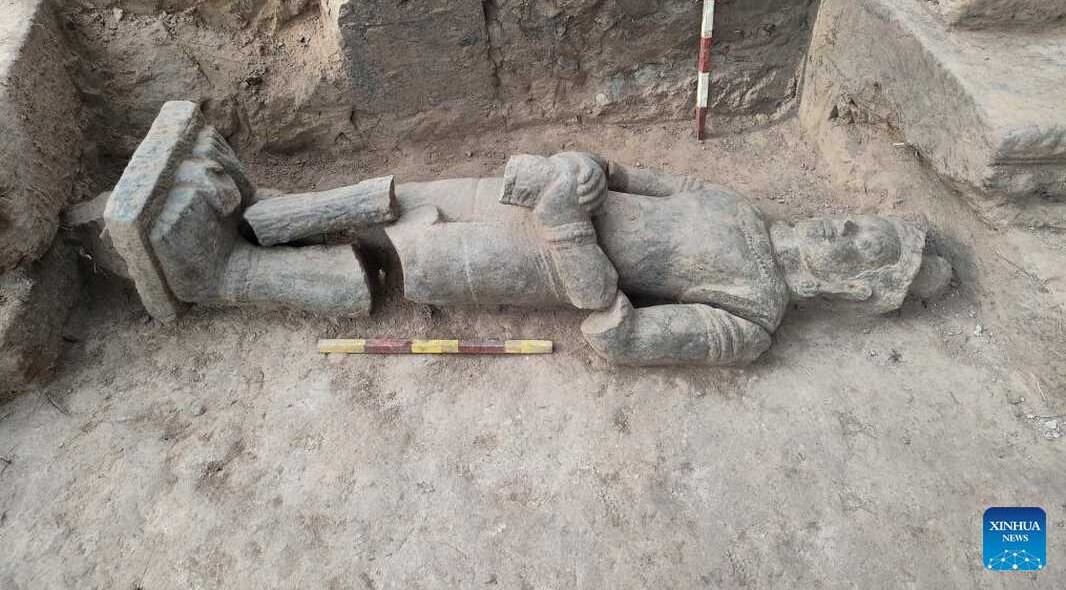
Even in the world’s most excavated ancient sites like the Pyramids and Angkor Wat, discoveries are made all the time.
Take this story from Cambodia for example, where at the Angkor Archaeological Park, a nearly complete Dvarapala sculpture, or “door guard” in South Asian mythology, was found buried under the Banteay Prei temple.
Carved of sandstone, the statue had been apparently dislodged because of damage to the upper structure of the gate it was guarding. It was found buried two-and-a-half feet below the ground.
Banteay Prei is a rarely visited temple located near another small temple called Prasat Prei in the northwest corner of the Angkor site. A Buddhist temple, (Angkor was a Buddhist kingdom though also contained many Hinduism elements) Banteay Prei was built by King Jayavarman VII in the late 12th or early 13th century.
“The statue remains in relatively good condition. However, it was found head down facing west, with the body broken into six pieces, including damage to the neck, forearm, left side, waist, and below the knees of both legs,” Chea Sarith, an archaeologist from Cambodia’s Department of Conservation of Monuments and Preventive Archaeology, said in a statement. “A part of its stick is also missing.”
The Dvarapala is a ubiquitous element in Asian ornamental sculpture and architecture. A Sanskrit word meaning door guard, it can be found all across the Buddhist world, including in Japan, Indonesia, and Korea, while also being a constant presence in Hindu and Jain architecture as well.

They can be enormous, monstrous, snake-like, sprite-like, divine, or bedecked with jewels, but the ones at Angkor were carved into lean, modest figures with downward-pointing clubs.
There’s a real element of China’s Terracotta Army about the newly-discovered door guard.
KEEP READING ASIAN HISTORY: 4,000-Year-Old Pyramid Rises From the Soil of Kazakhstan–First of its Kind Ever Found on the Eurasian Steppes
Angkor Archaeological Park is 401 square kilometers, which for a cultural heritage site is nearly unique in the world in terms of size. Many of the kingdom’s most famous temples are concentrated, but there are other temples and structures all over the area that receive almost no visitors.
SHARE This Wondrous Dose Of Knowledge With Your Friends…




















